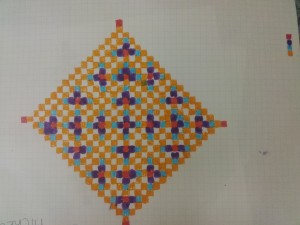
25th March – Spent several hours sunning on the shore lovely place for it. Called “Blackpool of Belgium.” How these people dress. Men effeminate, women so neat & fetching.
26th March – Plenty of mines still about. One soldier had narrow escape treading on mine in ruined house and got away with scratches. People and people ********. Masses of troops here now.
27-28th March – Went to Ostende plenty of shops and canteens. Could have good night life there I imagine. Returned by tram.. Many more casualties on beach by mines. Crowds by beach last week-end yet no accidents. Today soldiers due for leave tomorrow were blown up and killed. Beach roped off and out of bounds.
29th March – Went to Bruges. Prices up since last week. Visited Knocke full of troops. This place was well fortified and like many more will take ages to clear up.
30th March – Nothing to remind me of Easter apart from crowds going to Church. Otherwise all normal in town. Fed up here and wishing for more. Sent parcel home.
31st March – More at last. Standing by for Rhine job. Still no mail. Issued with khaki again. On way tomorrow. 200 miles trip. 27 us volunteers. Trip uneventful and monotonous. Country same throughout feat. pastoral, long straight roads. Plenty of cafes. Through Antwerp under mile long tunnel. Great damage glad to be away from there. Through Belgium.
I get a real sense of tension from this week. It’s as though Grandad preferred the operations in the farmsteads and being back in Blankeberge and waiting for whatever comes next is worse.
This sense of tension is amplified by the mines on the beach – the “Blackpool of Belgium” hiding these terrible explosive secrets. How awful it is to hear of the soldiers about to return home and yet to lose their lives the day before they get to go home, just as they are beginning to relax.
And now Grandad is on his way to beyond Belgium – past all the horrors of war-torn Antwerp and closer to the front line. I wonder what comes next?
I just can’t get that word in the 26th March entry: “confidence”, “coincidence”, “energetic”? I can’t tell and that sentence doesn’t make sense to me anyway.








